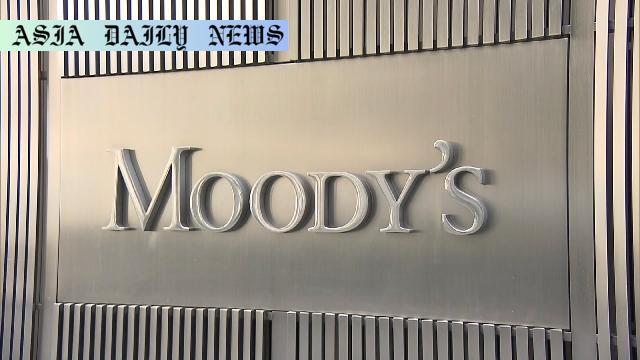Credit Downgrade: Moody’s downgrades US credit rating, citing rising fiscal deficits and growing interest costs.
- Moody’s downgraded US credit rating from Aaa to Aa1.
- Rising fiscal deficits and high entitlement spending are cited.
- The US no longer holds a triple-A rating from leading firms.
- This echoes similar moves by Fitch and S&P Global Ratings.
- The downgrade reflects economic challenges over the next decade.

US Suffers Credit Downgrade by Moody’s
In a significant development that has sparked widespread concern, Moody’s has downgraded the United States credit rating from Aaa to Aa1. The announcement on Friday marks a pivotal moment in the nation’s financial history, with the agency citing a troubling rise in fiscal deficits and interest costs as primary reasons. This move draws attention to the persistent challenges faced by successive US administrations in curbing fiscal disparities.
Exploring the Downgrade Decision
Moody’s decision is rooted in a detailed analysis of economic patterns over the past decade, with a particular focus on the rising fiscal imbalance. The agency highlighted that growing entitlement spending, coupled with an inability to reverse these trends, has contributed to this downgrade. Despite recognizing the United States’ significant financial and economic strengths, Moody’s emphasized that these positives no longer sufficiently counterbalance the nation’s deteriorating fiscal metrics.
Widening Fiscal Deficits and Rising Costs
A key factor in this downgrade is the alarming rise in fiscal deficits. Funding entitlement programs, rising healthcare costs, and mounting interest payments have swelled the fiscal deficit considerably. The consequences include a strain on future economic growth potential and escalating borrowing costs for the government. Moody’s projection predicts further widening of the fiscal gap, which could exacerbate financial difficulties in the coming decade.
Previous Downgrades by Other Rating Agencies
Moody’s decision follows similar actions by other key credit rating agencies. In 2011, Standard & Poor’s (S&P Global Ratings) first lowered the US credit rating below Aaa. More recently, Fitch Ratings downgraded the US in August 2023. With Moody’s action, the United States loses its standing as a triple-A rated country from any major credit agency, signaling significant economic challenges ahead.
Implications of the Downgrade
This latest downgrade could considerably impact the US economy, intensifying scrutiny of fiscal policies and economic management. Borrowing costs may increase, impacting infrastructure spending, welfare programs, and debt management. Furthermore, the downgrade could shake investor confidence, possibly leading to market volatility and a depreciation of US bonds’ perceived security.
Calls for Immediate Action from Policymakers
The downgrade underscores the urgent need for policymakers to address rising deficits and implement sustainable fiscal strategies. Experts emphasize bipartisan collaboration to craft long-term solutions that address entitlement spending, tax reform, and economic policy planning. Without this, the nation risks further escalations in debt and a fragile economic outlook for years to come.
A Wake-Up Call for the United States
Moody’s credit downgrade, coupled with similar actions by other agencies, serves as a stark warning for the US to address its fiscal challenges head-on. While the economic resilience of the country remains strong, structural reforms and prudent financial management will be critical in recovering its once impeccable credit rating.



Commentary
The Gravity of the Moody’s Downgrade
The recent downgrade of the United States’ credit rating by Moody’s is a sobering reminder of the financial challenges facing the nation. By stripping the US of its last remaining triple-A credit rating, Moody’s has sent a clear warning: the time for substantial fiscal reform is now. Rising entitlement spending and fiscal deficits are not new concerns, but their unchecked growth over the years has brought us to this point. The downgrade should not be dismissed as a symbolic gesture; it carries real economic repercussions that require urgent attention.
Economic Implications and Long-Term Concerns
One immediate impact of the downgrade is the potential increase in borrowing costs. As the creditworthiness of the US government dips, so too does investors’ confidence, leading to higher interest rates on government bonds. This could ripple through the economy, raising costs for businesses and consumers alike. Over the long term, the United States’ ability to fund crucial programs and infrastructure improvements may come under significant strain. This downgrade also invites global scrutiny, as other major economies may adjust their financial relations with the US based on perceived risk.
A Call for Reform and Bipartisan Action
While the situation is concerning, it is not without solutions. Policymakers have an opportunity to reverse course through decisive action. Bipartisan efforts to reform tax policies, entitlement programs, and spending priorities could go a long way in addressing structural challenges. This downgrade serves as a clarion call for a collaborative approach to economic policy. The road to recovery will not be easy, but it is both necessary and achievable.